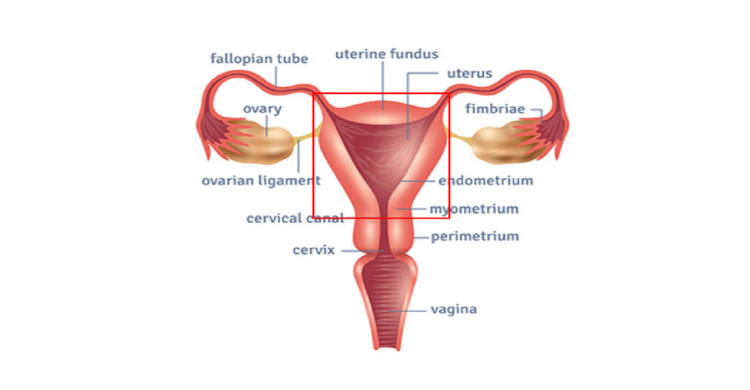Hysterectomy
Best Hysterectomy or Uterus Removal Surgery in Kharghar
Hysterectomy is a procedure in which the patient’s womb (uterus) is removed surgically. The uterus is an important part of the female reproductive system where the fertilized egg develops and grows into a fetus (baby). Therefore after hysterectomy, pregnancy is not possible. Depending on the condition affecting the patient, the doctor may remove the patient’s ovaries and fallopian tube as well.In addition, partial hysterectomy involves removing just the uterus while total hysterectomy involves removing both the uterus and cervix.

What is Hysterectomy?
The surgical removal of the uterus and, most likely, the cervix is known as a hysterectomy. A hysterectomy may comprise the removal of nearby organs and tissues, including the ovaries and fallopian tubes, depending on the purpose for the operation. Throughout pregnancy, a baby develops in the uterus. The blood you lose during your menstrual cycle makes up its lining. After a hysterectomy, you lose the capacity to become pregnant and you stop getting your period.
What are the types of Hysterectomy ?
Hysterectomy comes in a variety of forms. It depends on why you need the operation and how much of your womb and surrounding reproductive system can be left intact.
There are three main types of hysterectomy:
- A total hysterectomy involves removing the womb and cervix (neck of the womb); this is the most common procedure.
- During a subtotal hysterectomy, the womb's main body is removed, leaving the cervix intact.
- The womb, cervix, fallopian tubes, and ovaries are removed in a total hysterectomy with bilateral salpingo-oophorectomy
- Radical hysterectomy - removal of the womb, fallopian tubes, vaginal wall, ovaries, lymph glands, and fatty tissues
Why is a Hysterectomy required ?
Hysterectomies are performed by medical professionals to treat:
- Abnormal or significant vaginal bleeding that cannot be treated or managed.
- Severe menstrual discomfort that is not relieved by conventional treatments
- Fibroids in the uterus or leiomyomas (noncancerous tumors).
- Uterine-related pelvic discomfort that has increased but is not relieved by previous treatments.
- Cancers that might cause cancer, such as those of the uterus or the cervical region.
- Uterine lining conditions like hyperplasia, uterine polyps, or adenomyosis.
- Uterine prolapse, which can cause urine incontinence or bowel obstruction because the uterus "fell" into the vaginal canal due to weaker support muscles.
Hysterectomy complications
- Bleeding heavily
- Infection
- You may suffer bladder or bowel damage
How is a Hysterectomy performed ?
Your doctor will decide what kind of hysterectomy you require and the most effective surgical technique to carry it out. In order to provide drugs and fluids, an intravenous (IV) line is inserted into a vein in your arm. A physician who administers anaesthesia will give:
- General anaesthesia, which keeps you asleep throughout the surgery.
- Regional anaesthesia, also known as epidural or spinal anaesthesia. The drugs are injected close to the lower back nerves to "block" pain while you're awake
The procedures of Hysterectomy are different depending on the types of Hysterectomy.
1. Vaginal hysterectomy: An incision is made at the top of your vagina to remove your uterus. The vagina is stitched with dissolvable thread. This hysterectomy is most frequently applied to non-cancerous (or benign) disorders like uterine prolapse. It is said to be the best strategy since it has the fewest difficulties and the fastest recovery (up to four weeks).
2. Laparoscopic hysterectomy : Through a tiny belly button incision, a laparoscope (a thin tube with a video camera on the end) is introduced into the lower abdomen. Several further tiny incisions are used to implant surgical instruments. Through the incisions in your belly or through your vagina, your uterus can be taken out in little parts. Compared to an abdominal hysterectomy, the full recovery is quicker and less painful.
3. Abdominal hysterectomy: An abdominal incision between six and eight inches long is used to remove your uterus. Either across the top of your frontal hairline or from your belly button to your pubic bone, the incision is created. The wound will be closed by the surgeon using stitches or staples. It is most frequently performed when cancer is present, when the uterus is enlarged, or when other pelvic regions are affected by the illness.
4. Robotics-assisted laparoscopic hysterectomy: The surgery is carried out by your surgeon with the aid of a robotic device. The pelvic region can be seen once a laparoscope is placed into the abdomen. Three to five incisions are made around the belly button to implant tiny, thin surgical equipment. The surgeon is in charge of robotic arms and equipment. Similar to a laparoscopic hysterectomy, the recovery is quick.
5.Supracervical Hysterectomy or Partial Hysterectomy : The supracervical hysterectomy, also known as a subtotal or partial hysterectomy, removes the smallest amount of uterine tissue. In a partial hysterectomy, the uterus is removed, but the lower part of the uterus, the cervix, is left in place. Endometriosis, uterine fibroids, vaginal prolapse, chronic pelvic pain, and abnormal vaginal bleeding are often treated with a supracervical hysterectomy when less invasive treatments fail. A supracervical hysterectomy may also be preferred for certain urrogynecologic procedures.
Laparoscopic surgeries are done under the supervision of the best hysterectomy specialist , Dr.Sonal Bhangale in Kharghar, Navi Mumbai with utmost care and precaution.
What happens after a Hysterectomy ?
You will experience menopause following a hysterectomy if the ovaries were also removed. You can experience menopause sooner than you would have if the ovaries had been removed. After a hysterectomy, most patients are advised to refrain from sexual activity and refrain from carrying anything heavy for six weeks.
Consulting hospital
Women's Care Clinic
- C/O Dr. Sonal Bhangale, SHOP NO 512, OPD 209, plot no 47, D Mart Rd, Sector 15, Kharghar, Navi Mumbai, Maharashtra 410210
Alpha One Hospital
- Alphaone Hospital, Kharghar 410210.
